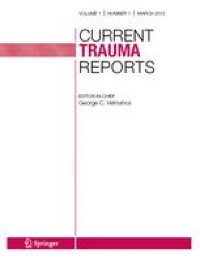Platelet Transfusion for Trauma Resuscitation

Highlights
- Trauma-induced coagulopathy (TIC) develops in approximately one-quarter to one-third of severely injured and hemorrhaging trauma patients (View Highlight)
- Mechanistically, evidence supports that TIC is a multi-factorial failure in vascular homeostasis generally characterized by an early hypocoagulable state contributing to ongoing hemorrhage, followed by a later hypercoagulable and hyperinflammatory state predisposing survivors to thromboembolic complications and organ failure (View Highlight)
- Although TIC is often exacerbated by concomitant dilutional and consumptive coagulopathy, TIC develops prior to resuscitative efforts and is characterized by a spectrum of adaptive and maladaptive alterations to clot formation and breakdown and cellular behavior, including that of platelets (View Highlight)
- In normal hemostasis, following a vascular breach and exposure of sub-endothelial collagen surfaces, platelets are activated, change shape, interact with von Willebrand Factor (vWF) and fibrinogen, and degranulate their pro-coagulant contents in the process of formation of a platelet plug. This platelet-based nidus of clot formation is a catalyst for thrombin generation, growth of fibrin mesh, and the strengthening and expansion of clot (View Highlight)
- Platelets additionally have a balancing role in fibrinolysis through both release of plasminogen activator inhibitor-1 (PAI-1) and alpha-2 antiplasmin to counter natural fibrinolysis, as well as through the binding of activated platelet surfaces to plasminogen and plasminogen activators, providing a surface for local fibrinolysis (View Highlight)
- platelets maintain endothelial integrity through direct interactions with endothelial cells and the release of growth factors that stabilize vascular endothelial junctions and promote angiogenesis (View Highlight)
- minor injury results in increased activation of platelets; however, severe injury and combined shock are associated with reduced activation and aggregation (View Highlight)
- Platelets activated by trauma also have been shown to balloon and release microvesicles, which coat leukocytes and have procoagulant action promoted by DAMPs such as Histone H4. These platelet-leukocyte interactions persist for several days following injury and are associated with multisystem organ dysfunction as well (View Highlight)
- Recent data from patients receiving very large volumes of transfusion after injury (≥ 20u RBC in the first 24 h), coined ultramassive transfusion (UMT), suggest these patients remain at risk of failed hemostatic resuscitation. (View Highlight)
- Outside of the massive transfusion practices for the hemorrhaging patient, transfusion thresholds of platelet counts < 50,000/μL for acute traumatic hemorrhage and < 100,000/μL for intracranial hemorrhage remain general recommendations (View Highlight)
- While it is clearly important to include platelets as part of a hemostatic resuscitation strategy based on outcomes, overall, the combined data suggests that in the setting of severe injury and shock circulating platelets are altered in their functional behaviors [28•], and that even transfused platelets may be relatively refractory in their hemostatic behavior [23]. It may be that the circulating environment is inhibitory to platelet hemostatic behaviors for both native and transfused platelets, but that the driver of clinical benefit of transfused platelets is instead due to other activities of platelets including endothelial maintenance and immune and inflammation regulation (View Highlight)
